Original author:knower
Compilation of the original text: The Way of DeFi
Original author:

Compilation of the original text: The Way of DeFi
(This article has deleted the first part of the original text, if necessary, please refer to the original text)
* Disclaimer: This article is not financial advice and the author has no investment in anything mentioned except ETH. For the first part of the essay, the reader can choose to skip it, but it helps shape the narrative. Special thanks to @brianfakhoury and @0xCoinjoin for taking the time to proofread and share some much needed feedback *
Just as skyscrapers have become ubiquitous in urban life, so will technology in all its forms, whether we’re discussing the internet, cryptocurrencies, or artificial intelligence. Plus, just like how architecture has evolved from monolithic structures limited to a single purpose (housing, single business, manufacturing) to modular superstructures for the urban revolution (multiple businesses in one skyscraper, vertically-scaling luxury living) , and so will our precious blockchain Ethereum.
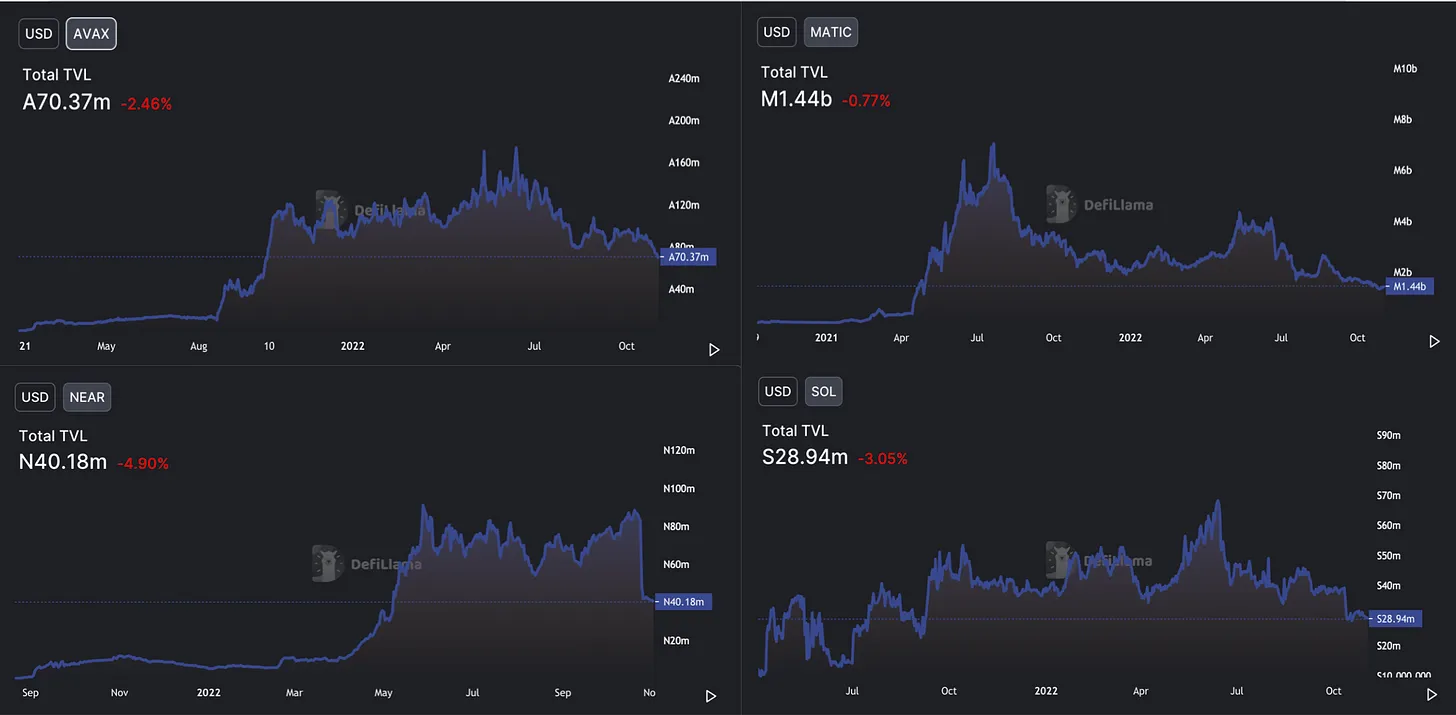
Remember how we got here?
During Crypto's most recent cycle, a slew of alternative layer-one "Ethereum killers" has popped up, attracting tens of billions of dollars in TVL investment, sparking thousands of tweets from VCs, throwing them Described as the savior sent to save us from the evils of Ethereum. The alt L1 token has rallied a lot during this time, and the ecosystem has flourished, creating plenty of opportunities for new crypto users to trade affordably in these environments. Then, the singing and laughing stopped abruptly.
Looking at the DeFi TVL of these alt L1 ecosystems right now, these so-called Ethereum killers have played a pacifist role, complacently doing nothing while L2 and modular-based teams continue to grow rapidly. To put it bluntly, alt L1s are not inherently bad, many of them have innovative designs, and may dominate the crypto niche in the future. But the problem is that they are not attractive enough to attract Ethereum users and Ethereum's dominant market share in DeFi TVL.
Look at these alt L1s, they are waging a culture war for their centralized validator set. In Ethereum, there are more than 420,000 validators, powering one of the greatest experiments in a distributed system ever. No other alt L1 has such a scale at all, and even Solana, which ranks second, only has 3400 validators.
This might not sound like a big deal now, but one of the core tenets of cryptocurrencies is decentralization -- there's a reason why Ethereum is focused on security and decentralization, and anyone who bills itself as the current king of blockchains Better alternatives are in dire need of this design choice.
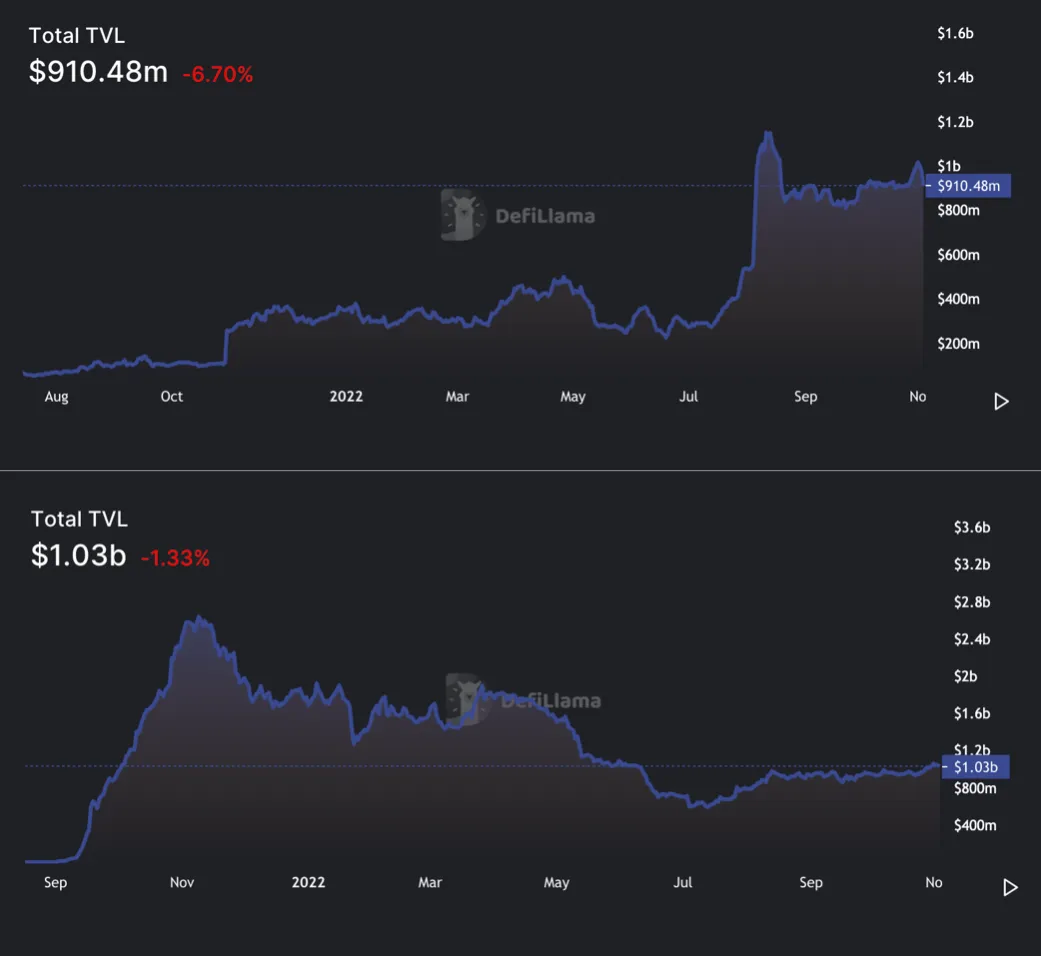
Aside from the alt L1 validator set, another reason for their failure is also fairly obvious in hindsight - the currency's printing machinery stopped. In a bull market (early 2020 to early 2022), any inexperienced crypto investor or trader can throw money at a coin and be confident it will pull at least 5x in a reasonable time frame. This fuels hysteria, extreme optimism, and most deadly, greed. I'm not saying these are unfair pump-ups for alt L1 and its ecosystem tokens, but they are today like the graveyard of a bygone era. If you're wondering how launching an alt L1 would fall in the current crypto environment, just look at the APT (Aptos) chart.
Even when calculating the reduction in native token deposits, rather than the graph of token price - 85% in USD terms, these alt L1's TVL declines are very large. Taking a closer look at these alt L1 ecosystems, the top 10 protocols tend to be a mix of 1 or 2 successful native applications, such as Uniswap/Aave type (started with Ethereum) cross-chain implementations, or some kind of unsuitable The "backdoor" application for the purpose has a large number of user TVL due to some reasons that I don't know. I believe that from now on, about 90% of developers will be actively developing on the second layer or Ethereum. As for why, just look at how Arbitrum and Optimism have performed relative to the "Ethereum killers" in recent months.
Of course, that's not to say alt L1 hasn't had other success, as evidenced by the next phase of business development and serious partnership between Polygon and Solana. I'll talk more about Polygon in the next section, with a particular focus on its zkEVM, and how it competes with many other zkEVMs.Link)。
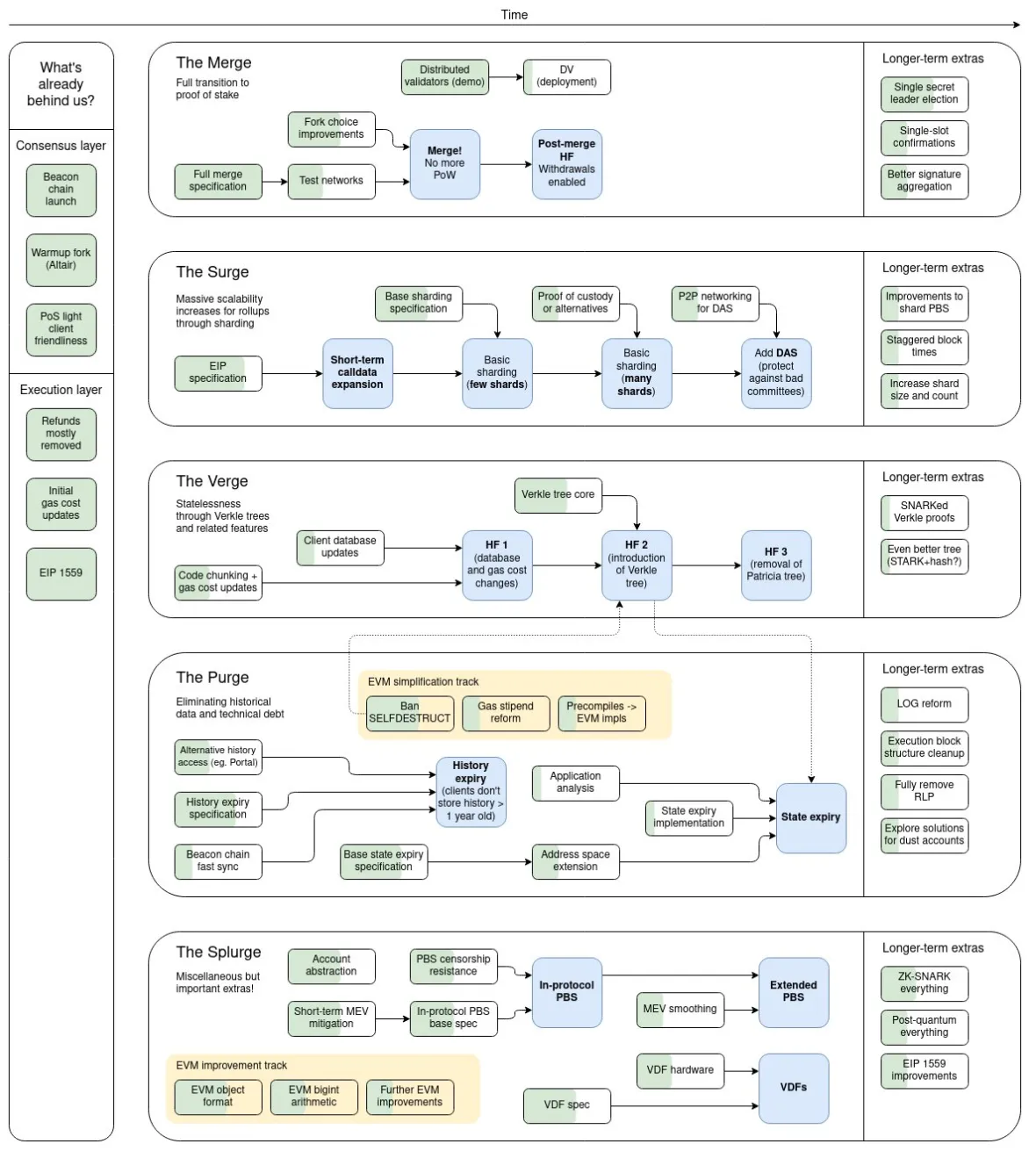
Well, the groundwork has been done enough, now it is time to pay attention to our situation today and the development of the future. Currently, Ethereum has completed its much-anticipated merger to PoS, with a series of upgrades (The Surge, Verge, Purge, and Splurge) planned for the next few years. The image below is a nice infographic explaining what these upgrades are about (Vitalik tweet
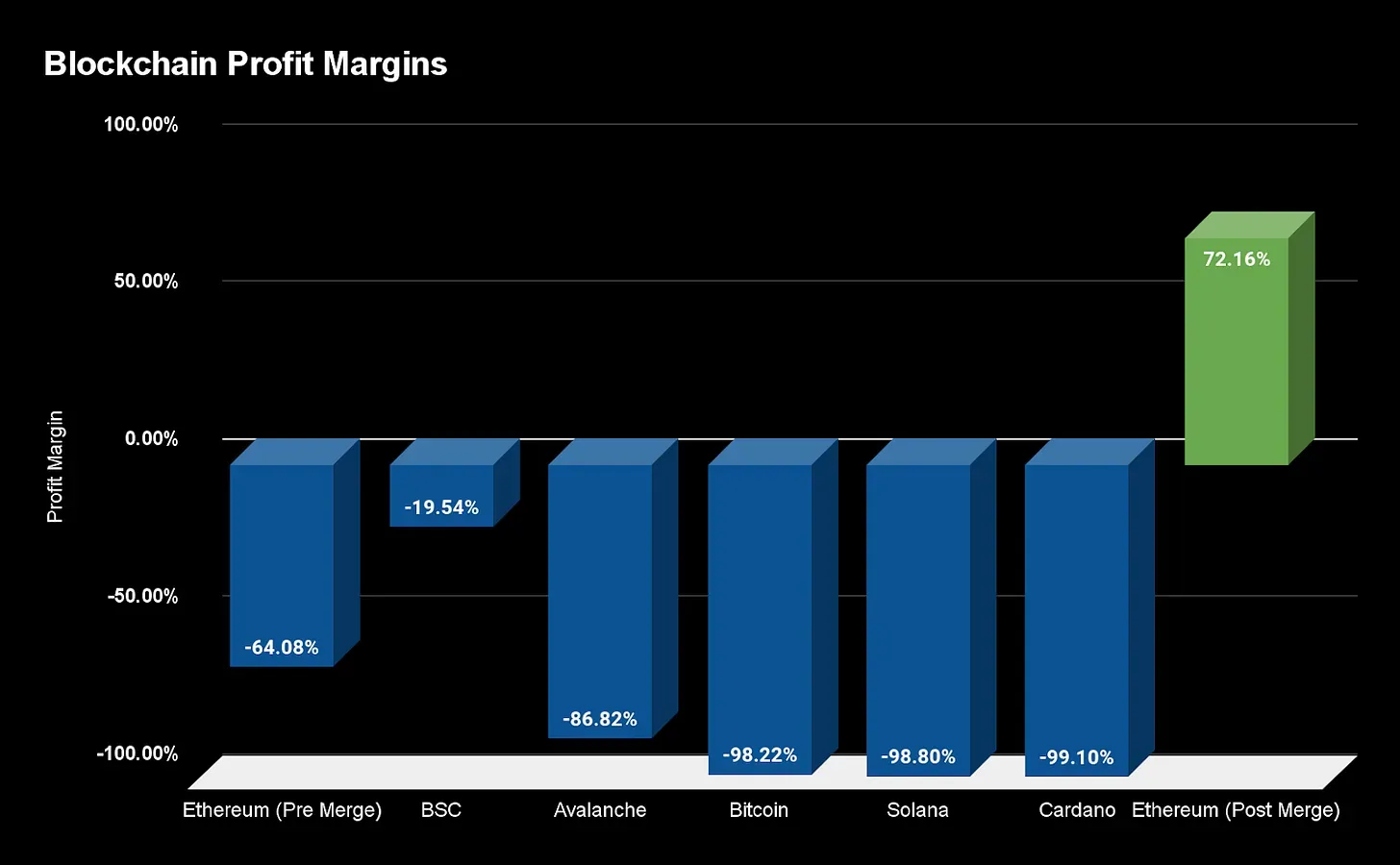
Link
Later in this report, I will touch on some of these terms, especially sharding and EIP-4844, which is a small step towards the end of Ethereum. Looking at the next graph, the merged Ethereum is the only L1 that can generate positive profit margins - and this does not even have competitors (except Binance Smart Chain).
More promisingly, developments around zkEVMs, modular solutions, middleware, and even L3 have taken Twitter by storm over the past month. I believe that Ethereum will emerge as the preeminent L1 that will have the lion's share of DAU and TVL for every cryptocurrency application. That point has come, but not quite. The purpose of this report is to explain why I have this hunch, and how these promising technologies work, and what they mean for the average crypto user in the years to come.
technology research
Let's say you're a seasoned crypto user and spend your time browsing crypto Twitter. You follow Inversebrah, Cobie, and Hentaivenger66 and consider yourself pretty good at navigating the trials and tribulations of the nascent crypto market. Maybe you made a lot of money in the bull market and lived a comfortable life, but you already feel a chill in your heart. In a bull market, you don't need to know a lot to be successful. Between the full-screen GM, the positive vibe, and the money you can make at the click of a button, you don't have a lot of time to work out the mechanics of your Lamborghini payout. And these days, you don't have that much to do on Twitter.
Maybe you're working on a DAO or an upcoming new protocol trying to pull new users from Twitter who just want to get back their lost revenue. Maybe you've tried researching something like MEV, only to find out that you're not as smart as the market would have you think. You probably have a good understanding of what optimistic or ZK rollup is and why they are necessary. Maybe you got a fat OP and transferred your governance tokens to more righteous citizens on the blockchain. But anyway, you're slowly realizing that you don't have an edge.
People keep tweeting about zkEVMs and why they are the future, and you nod in agreement with all their tweets. In the back of your mind, I know you're asking yourself why zkEVM needs to exist in the first place, and why there should be more than two such products. I'm almost sure that you might be thinking why have zkEVM if we've already had Optimistic rollout and it's doing well - Ethereum doesn't even have a chance to reach mass adoption in five years so it's not clear Why do developers think so far.
Maybe you see people tweeting about concepts that don't make any logical sense. You ask yourself: "What the hell is data availability? Why are we suddenly worried about this, isn't the problem with Ethereum's low TPS? L2 handles execution and solves this problem, why should we worry about something that is not a problem at all? If L2 is so good, why do we even need a modular layer? If Ethereum has these huge plans to implement sharding, what's the point of something like Celestia if it's going to be obsolete in a few years? Also Yes, why on earth are L2 devs tweeting about Validiums, Volitions, and L3 if we haven't already attracted a ton of users to L2 that has already solved all our problems?"
Believe me, the current state of Twitter is not ideal for someone with limited time and patience who needs to dig through podcasts, media articles, docs, and hundreds of twitter threads to find some sort of answer to these questions. I'm not saying it's impossible to understand everything, but there aren't many (if any) resources that pull all this information together into an understandable presentation.
I have to say that, in fact, I am not an expert in this field. L2, L3, zkEVM, modular layers, and complex middleware are all out of my comfort zone. Over the past few weeks, I've been taking tons of notes, doing more reading than ever, and getting ready to try and summarize the future of Ethereum as it becomes the powerhouse of modularity. It's not easy.
I'm fairly confident that even though I could be wrong about a lot of things in this report, I don't mind. I don't claim to be an expert in scalability, cryptography, complex math, or a blockchain guru - I'm just a eager learner who wants to help others understand how modular Ethereum could change everything. I hope you will comment on this article or reply to as many critical comments as possible on my twitter. By summarizing information that is difficult to digest immediately into a format suitable for the average crypto user (like me), I think the space as a whole can benefit by leveling the playing field.
My goal with this report is to make it the most technical report yet, but please forgive me for not digging as deep as you asked. My main purpose in writing this is to make sense of all these things that are developing and how they all work together in the next step. I did a lot of reading, revising, researching, documenting, and painstakingly coming up with what you're about to read.
Grab a couple of coffees and let's get started.
ZK Rollups and zkEVMs
Zero-knowledge proofs are superior to fraud proofs used by optimistic rollups (ORs) because they are smaller (less strong) and more efficient. Fraud proofs require "observers" to pay attention to malicious behavior, while zero-knowledge proofs only rely on magical mathematics and cryptography.ReportAs Alex Connolly writes in his excellent
ReportthreadThe EVM is the most widely used runtime environment, so why reinvent the flywheel? Optimism is a good example because they've been developing their own runtime environment -- the Optimism Virtual Machine (OVM) -- but had problems creating a translator from OVM to EVM. I'm no expert, so here's one from @jinglejamOP
existMirror, you may wish to read it.
In their post, Optimism writes: “We’ve learned a lot about how scalability relates to developer experience — that is, by getting out of the way and letting Ethereum do its thing.” Through their lessons learned, Optimism announced a future upgrade to provide the EVM equivalent of fraud proof Cannon.articleBack to zkEVM, at this point in time, there are four types of zkEVM, Vitalik in this excellent
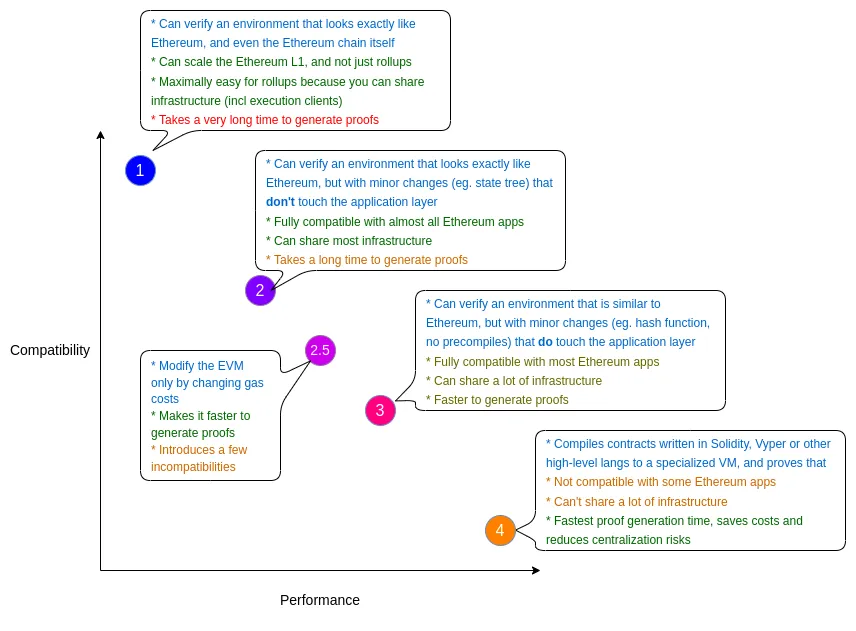
article
described in.
EVM-Equivalent zkEVM (Type 2) is the holy grail of zkEVM development. The second type of zkEVM can run faster than the first type of zkEVM by abstracting away processes in Ethereum that are not necessary for its purpose. Scroll is an example of the second type of zkEVM because it follows the Ethereum 1:1 approach, the only difference is the operating environment (zkEVM v. EVM). So, how does Scroll do this?postAccording to the team'spost, Scroll consists of three different parts: Scroll node, Roller network and Rollup/Bridge contract. As I mentioned, Scroll differs from Ethereum in the way it handles opcodes (instructions for doing various things through code). To break through this brick wall, Scroll is "
Building Specific Application Circuits ("ASICs") for different DApps” to connect their zkEVM runtime environment. It is a difficult task, but I believe they can complete this challenge.。”
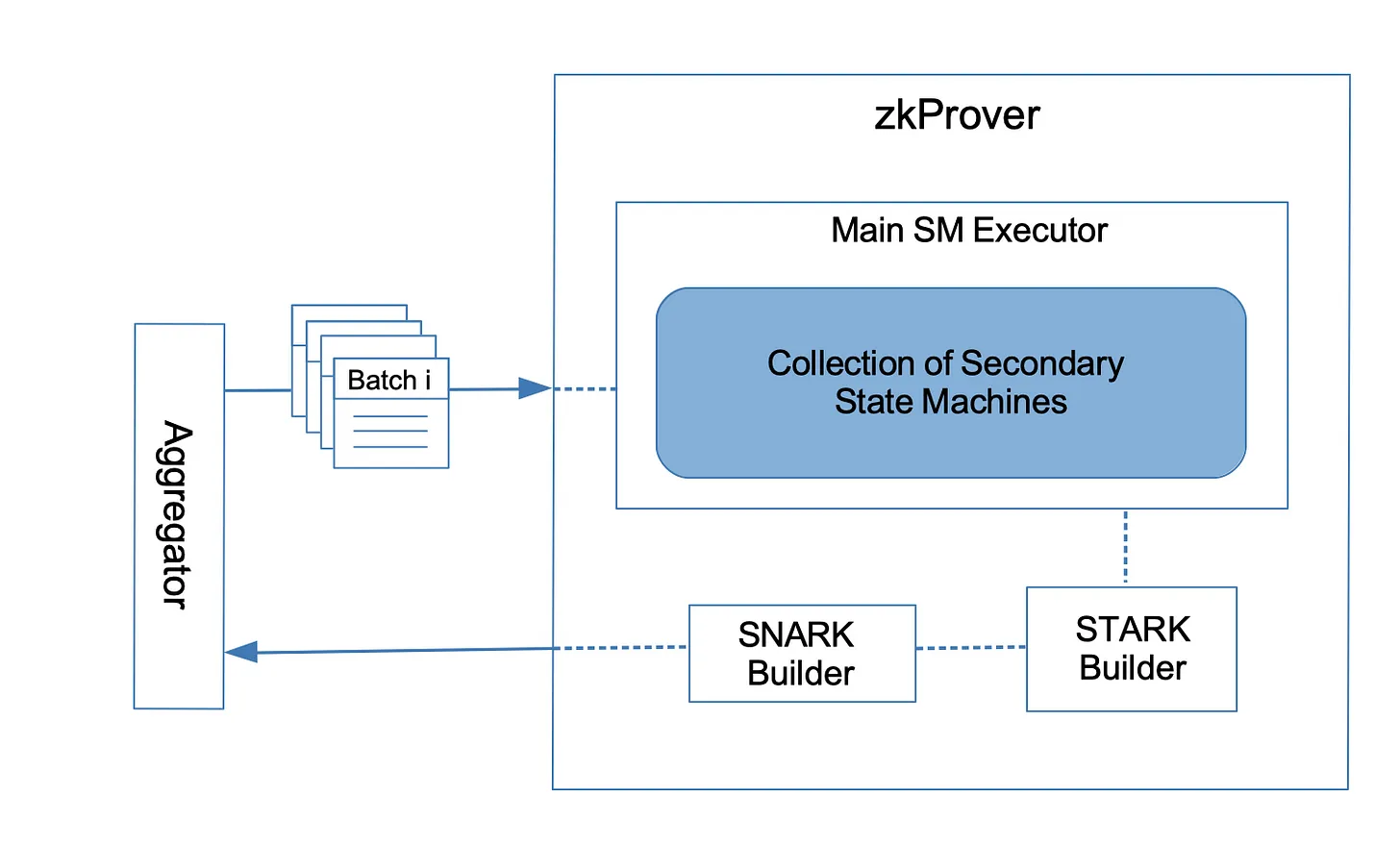
Another second type of zkEVM is being developed by Polygon, which recently announced the launch of a testnet. While similar in architecture to Scroll, Polygon zkEVM adds an extra step of sending EVM opcodes through their zkProver, stating: "
EVM bytecode is interpreted using a new zero-knowledge assembly language (or zkASM)
Scroll doesn't require an extra layer when dealing with EVM op code, while Polygon zkEVM adds an extra step to make it a bit simpler, but maybe a little bit of compatibility is missing in the process. Both teams are hard at work, and I'm eager to see how they fare when fully launched.
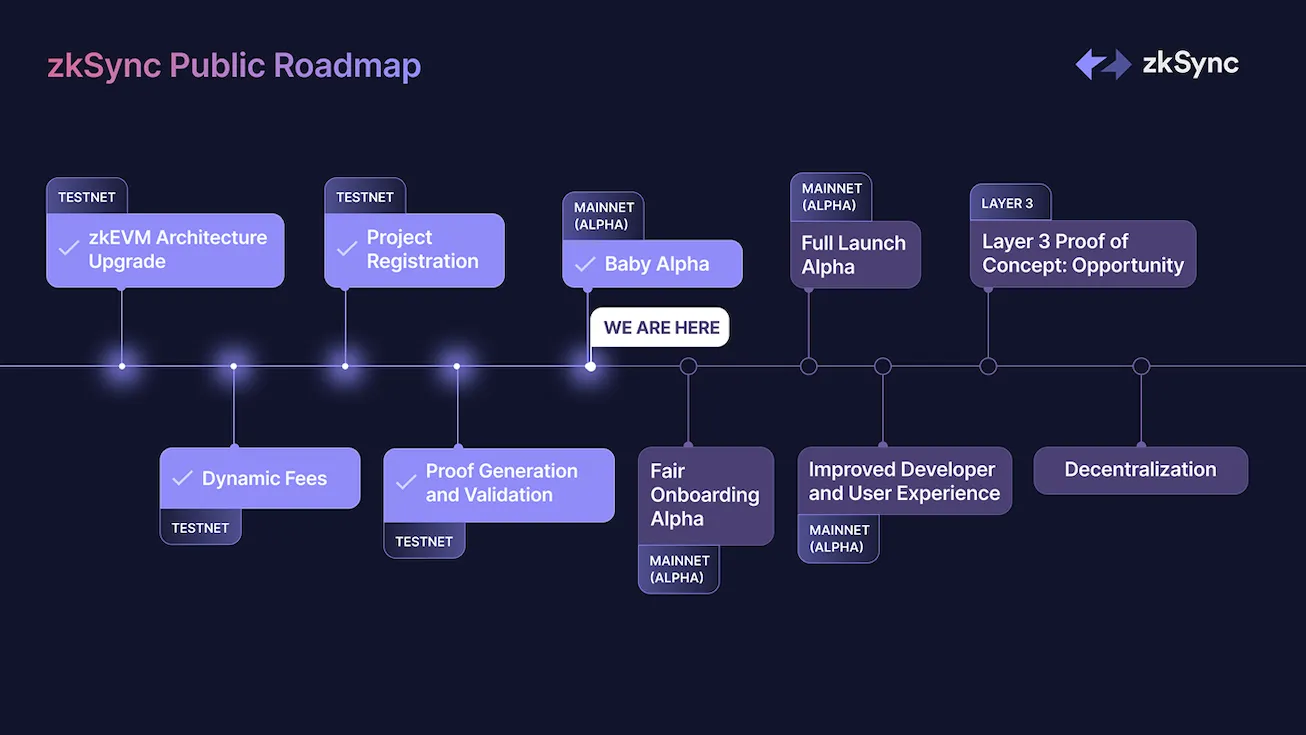
The second and third types of zkEVM (EVM-Equivalent and EVM-Compatible) are now fairly vaguely identified, mainly because different people may debate the classification of Scroll and Polygon zkEVM. Because of this, I'll jump straight to zkSync and Starkware, two examples of high-performance Solidity-Compatible (fourth class) zkEVMs.
The fourth category of zkEVMs is structurally quite different from Ethereum, offering the highest performance at the expense of compatibility. As you probably know, zkSync is gearing up for a full alpha (maybe a token), while the Starknet mainnet is live with limits on ETH deposits (sort of a mini-alpha).
While Starknet doesn't support Solidity (yet), they were able to solve this with the help of the Nethermind Transpiler. Through it, Solidity code is ported to Cairo, a programming language created by StarkWare, and then these ported codes are run through Cairo zkEVM. Solidity is the most popular smart contract development language, enabling Starknet to more smoothly onboard developers and improve the specific performance of the fourth type of zkEVM.
One of the problems with Starknet that Alex Connolly mentioned is that most of the programs available today are written in Cairo, and this may cause concern for future developers writing in Solidity. While this is more of a "ship goes straight to the bridge" question, it's worth noting and keeping an eye on.
Looking at zkSync again, their process is fairly similar to Starknet's, with a few key differences. Like Starknet, zkSync converts Solidity to Yul, which is then fed to their LLVM compiler, which eventually goes into their custom virtual machine, SyncVM -- or is it ZincVM? Either way, these processes are far from being 1:1 compatible with Ethereum, but in this world of 0s and 1s, speed is key.
A common factor among the fourth class of zkEVMs is their "zkification" of the EVM. With zkSync and Starknet, they de-emphasize the complex process of fine-tuning the EVM to make it work with zero-knowledge proofs. By making their own zkEVM, they can trade the sweat and tears of technical complexity for faster performance and a little more work in developing their own workaround.
While time will tell which type of zkEVM will come to the fore, the performance of less technical ORs provides a fairly strong indicator that ZKRs will do well on their own. All you have to do now is wait.
Validiums and Volitions
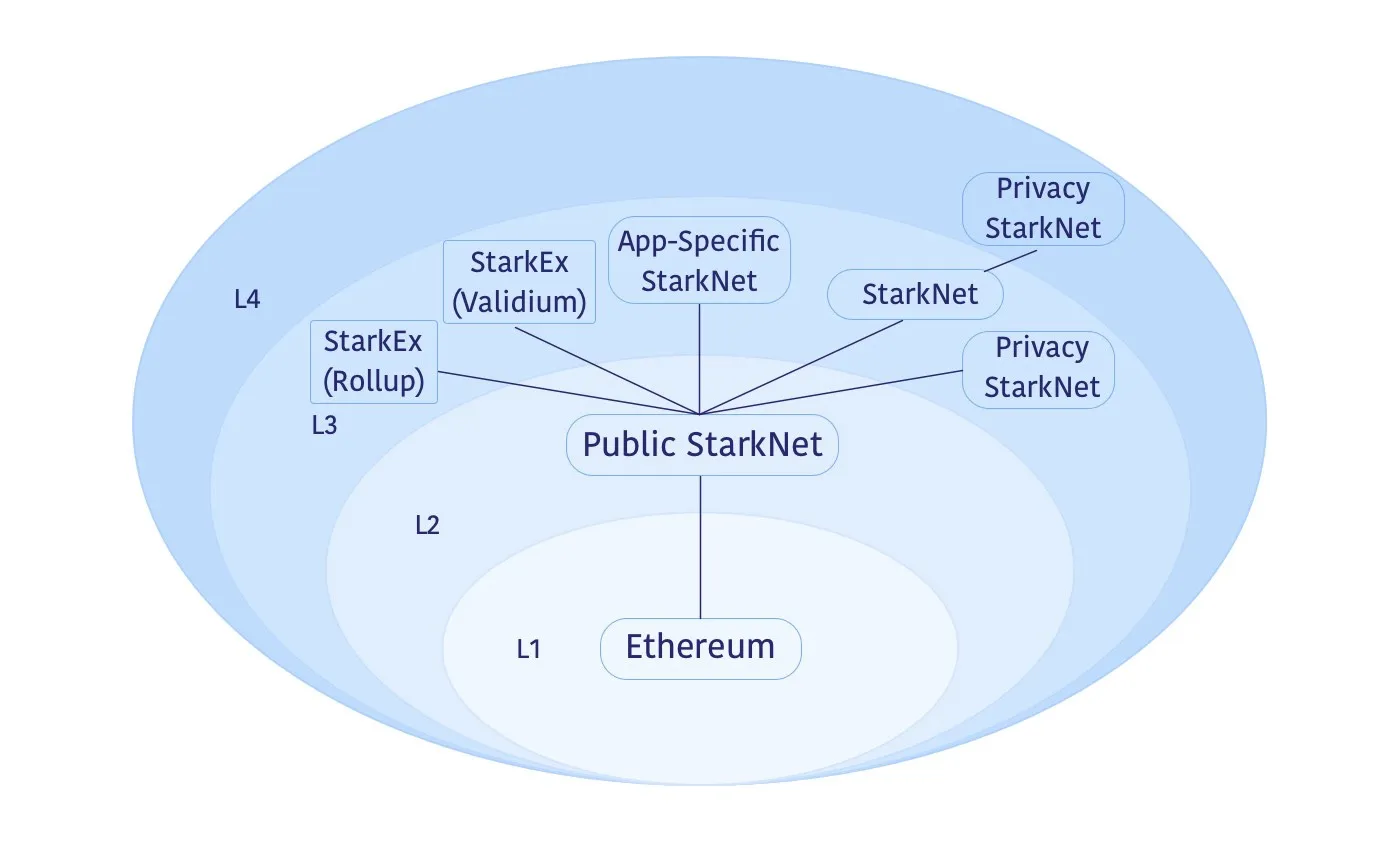
This part is a bit complicated, but I promise it will make sense afterward. Remember the L3 I mentioned? Allow me to introduce you to Validiums and Volitions, the next step up from ZKRs like Starknet and zkSync.TPSValidium is essentially ZKR, but with a key difference that data availability is handled off-chain rather than on-chain. But why are Validium necessary and how are they integrated with L2? For starters, here's a diagram made by Starkware outlining Starknet's potential future.

As you can see, Starknet (ZKR) connects to L3 nodes as an L2 node - StarkEx is an example of validium, as an L3 node, which can generate STARK proofs outside the chain (recommended
Between 12,000-500,000, depending on the type), and then sent to Starknet for verification. A validium is an application-specific rollup, as you might recognize if you're familiar with Immutable X or dYdX. So why is this cool? Because validium can provide a single verification, making transactions cheaper and faster, and greatly improving the TPS of standard ZKR. This is one of my favorite graphs that highlights the potential of L3 -- in fact, it also inspired my research on L2 some time ago.Matter LabsAs you can see, ZKRs are 4x faster than ORs, and 'zkPorter' like the zkSync proposal can even be 10x faster than ZKR. zkPorter is also a volition, the L3 proposed by Matter Labs for zkSync, and also operates like StarkEx through its off-chain behavior. The only downside to L3 is that they provide less security and lack shared liquidity - but they are still more secure than ALT L1. So, how do they do it?Alex GluchowskiEthereum's L2 shares security with mainnet Ethereum, but L3 is a bit detached (or too visually distant) from this L1. Because these funds in validium are stored off-chain and the availability of data is abstracted from ZKR, users' funds are basically at the discretion of whoever acts as an operator. In this post,
stated: "The data availability of zkPorter accounts will be ensured by zkSync token holders, known as guardians", while
Says “StarkEx mitigates by introducing a permissioned Data Availability Committee (DAC).”
From these two mechanisms, you can infer that the permission set of eight people (StarkEx) and the slashing mechanism for dishonest operators (zkPorter) increase the trust assumption that users choose higher throughput and lower Available information must be taken into account when dealing with transaction costs.
Of course, I'd be an idiot if I didn't mention volition at the end of this section. It's rather tedious to find a straight answer on what a volition really is, so keep in mind that this may not be the most accurate definition. Volition is basically a hybrid solution between ZKR and their respective validity periods, allowing users to choose how they prefer access. Volition is nice because applications no longer have to choose between a) increased security with ZKRs or b) more customizability and higher throughput with validium.articleA concrete example of Volition is the proposed Adamantium, an off-chain DA solution proposed by StarkWare where users can choose to manage their data availability. It should cost a bit more than the alternative of letting StarkEx's DAC handle data availability, but it makes sense for users looking for increased security of funds. Here is this
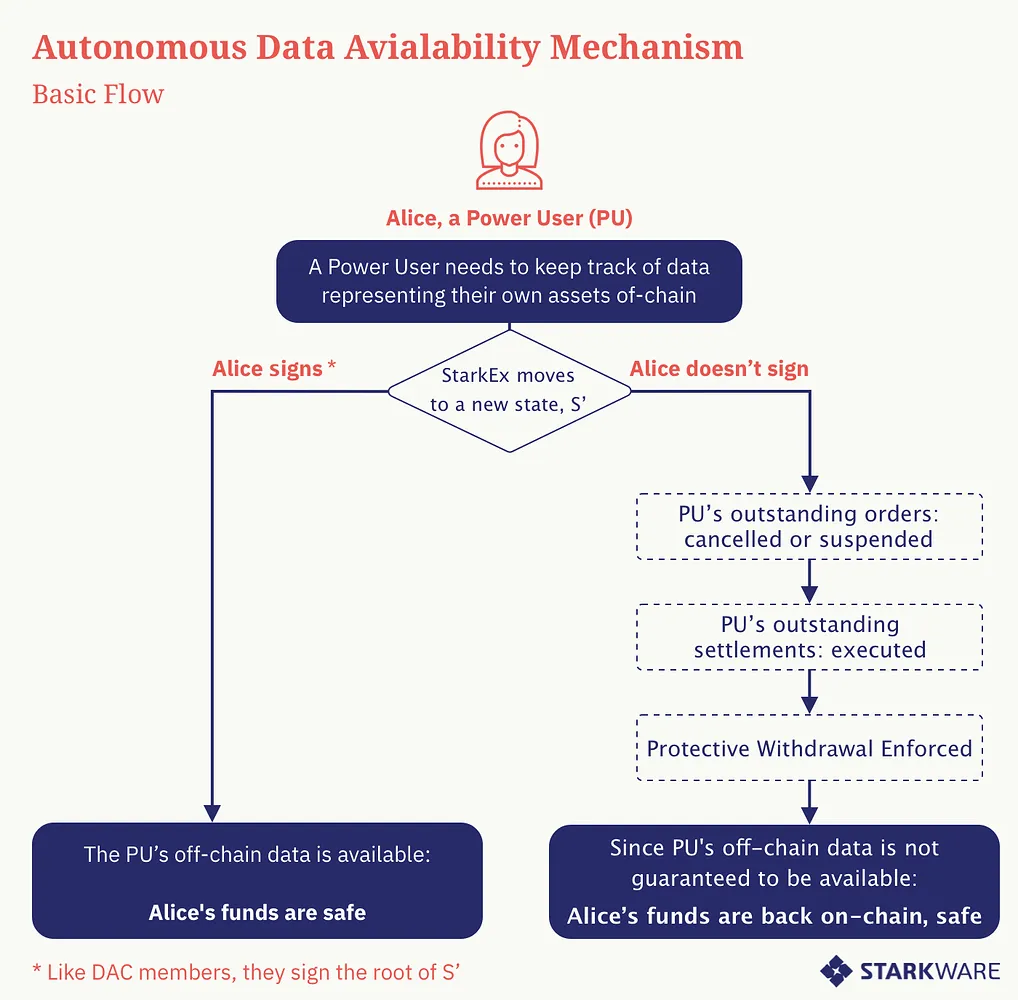
article
Image provided in , which explains Adamantium in more depth than I can.
modular layerarticleIn order not to make this report too long, I will only talk about two modular layers. Celestia and Fuel. In this wonderful
article
Before you ask why you need a modular execution layer or why Fuel is such a cool technology, let's take a step back. Remember how alt L1 became popular as Ethereum became more crowded and transaction costs went up with it? Many refer to this as an "execution bottleneck", which L2 temporarily solves. And in a post-merger world, Ethereum has set its sights on solving what it calls the “data availability bottleneck.” At this point, Ethereum is in a pretty good place right now. We are in the middle (or beginning) of a bear market, transactions on mainnet are relatively affordable most of the time, and ORs are enjoying some well-deserved attention. So, what's the problem?articleAccording to this article from Blockworks Research involving EigenlayerEIP-4844article
(I'll get to that later), Ethereum's current data bandwidth is only 80 kb/s. And with something like Eigenlayer, Ethereum can increase its bandwidth by a factor of 200 to 15 mb/s -- a massive increase. The topic of data availability is important because things like
EIP-4844 highlights the fact that execution bottlenecks are far less of a concern than they used to be -- it's time to focus on data availability bottlenecks. So, let's see how Celestia can help solve this problem.AnnounceCelestia is a modular data availability and consensus layer, recently"Announce"They raised $55 million from prominent investors like Polychain Capital and Bain Capital -- quite a large amount in a bear market. By using a called
Data Availability Sampling
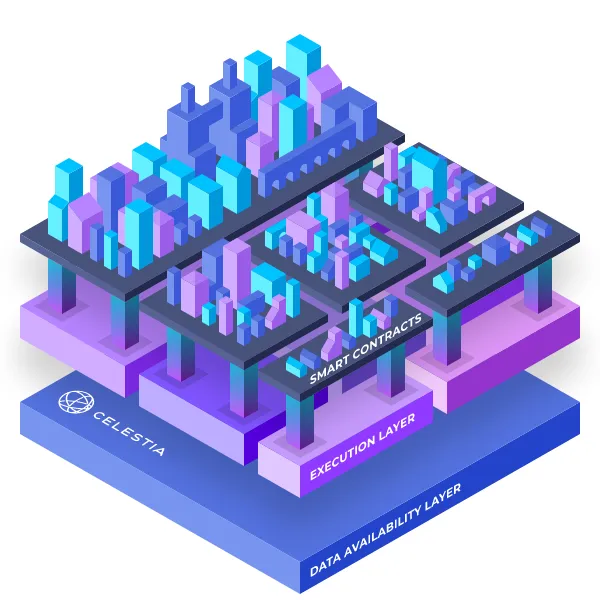
Based on the concept, Celestia can provide non-sharded blockchains with the power of sharding through data availability proofs. I know, I've said that word too many times, so from now on, I'll also refer to Data Availability as DA.
Celestia will allow L1s or L2s to plug into this DA sampling system and offload the task of managing DA, making rollup and L1 chains more efficient and better prepared to scale as the number of crypto users grows.As you can see, the DA layer is an L2-like concept that operates as an execution layer, breaking Ethereum out of its monolithic chain and becoming more modular. Celestia stands out because it is built with the Cosmos SDK, making it compatible with application-specific blockchains. It is very likely that in the future, Celestia will be horizontally integrated with all operating blockchains, generating a large amount of revenue from transactions on each chain. Sounds pretty cool to me.In the short term, I have no doubt that Celestia will be widely used in every major L2, as there is very little downside to doing so. Celestia even defines this phenomenon as creating "
sovereign rollup

”, that is, L2s that only require the Ethereum mainnet for settlement. This is slowly becoming a reality, as L2s are growing into separate ecosystems and communities, unlike Ethereum.
Sorry for deviating from Fuel, but describing why a modular execution layer is necessary. Fuel can improve the execution ability of rollup through the decoupling of calculation and verification. Typically, validators handle both of these processes themselves -- applying state adjustments and confirming the validity of state adjustments -- slowing things down. Fuel hopes to speed things up.
Like I said, adding a modular execution layer is not an attack on L2's technological advancement. In my opinion, it is a positive expression. Think of it this way.
If L2 sucks, no one cares about developing software to make them work better. The development and eventual release of Fuel demonstrates the potential for L2s to triumph over alt L1s and makes the case for a modular Ethereum. Fuel consists of three parts that make it stand out: the Fuel VM, the Sway programming language, and parallel transaction processing. If you've looked closely at Aptos, you'll probably recognize the last term, as they apply a very similar mechanism (if not the same kind) to increase throughput and improve efficiency.
L1s, L2s, sidechains, and everything in between can plug into the Fuel framework, improve execution, and return some of the fee revenue to Fuel as thanks. Fuel is able to achieve this boost in execution by abstracting "the resource-intensive functions of execution to powerful block producers." As mentioned earlier, this is the ever-important separation between computation and verification. Fuel uses fraud/validity proofs to avoid malicious behavior, this is the famous slashing mechanism, and I hope you are familiar with it.
middleware
Collectively, modularity layers like Celestia and Fuel aim to improve the functionality of monolithic blockchains and push them toward a fully modular future. Even better, these protocols may have tokens that are airdropped to testnet users. But, I'm just guessing here too.
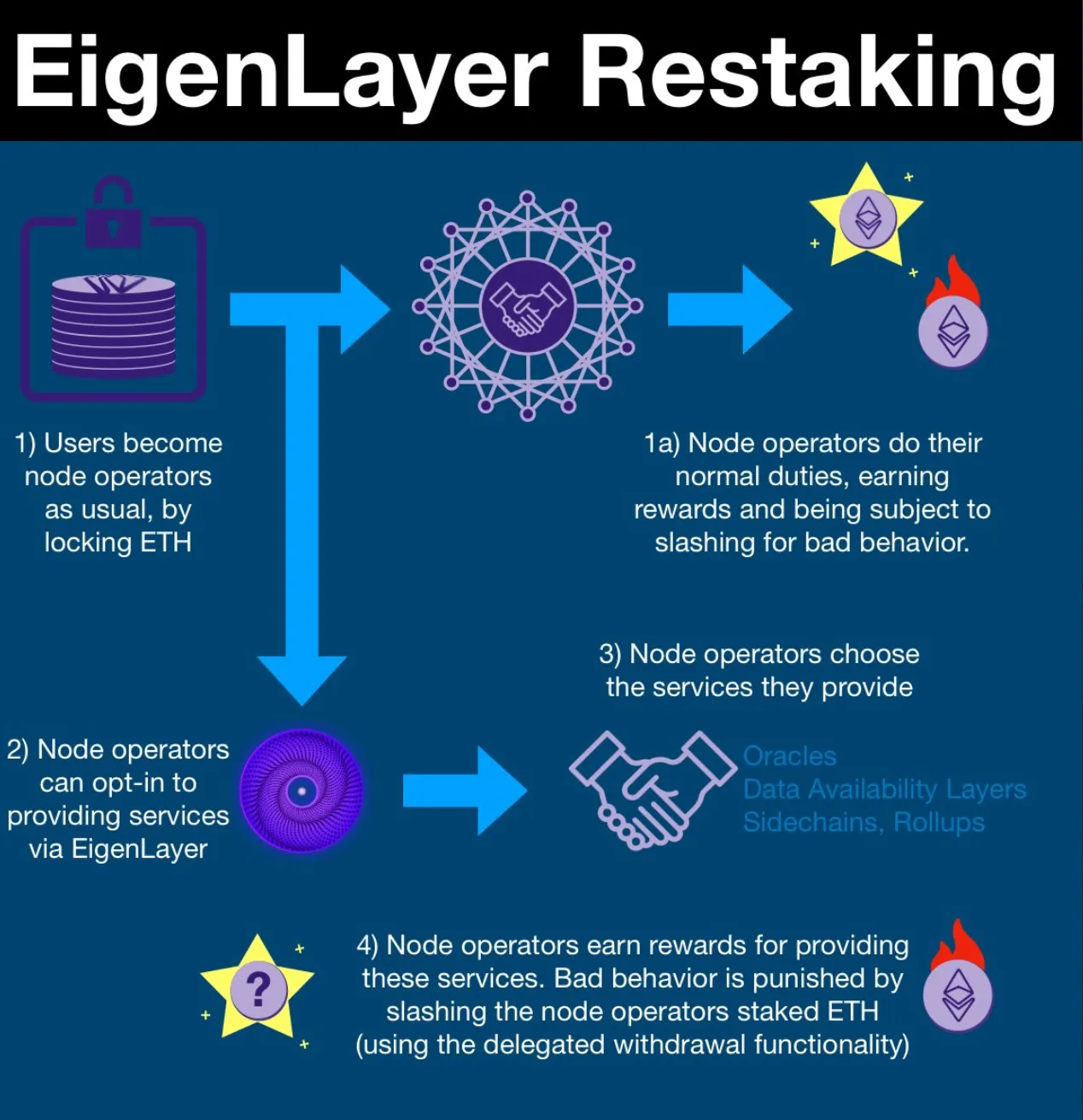
Eigenlayer introduces a concept called "resttaking", which essentially improves the capital efficiency of staking ETH (such as stETH or rETH) by allowing users to deposit these staked ETH into the Eigenlayer contract. Eigenlayer can use staked ETH to secure basically anything, whether it's an oracle, a sidechain, or a cross-chain bridge. For more details, see the aforementioned Blockworks'articleandarticleand
Eigenlayer official website
Read further.threadWhile staking ETH again may sound dodgy, it's not what you might think. Your staked ETH validates Ethereum, earning you money in the process. While staked ETH validates Ethereum, you are free to spend it anywhere! It's highly liquid, and basically every application supports liquid collateralized derivatives of ETH because it's deeply rooted in crypto at this point. If you're skeptical, just look at Lido's TVL.
In conclusion, restaked ETH into the Eigenlayer contract can be used to guarantee or verify (not sure about the correct term) what you want. Eigenlayer even developed their own DA solution (EigenDA), which may become the most popular product they offer. Part of the reason I'm so excited about Eigenlayer is an idea that came to my mind after reading the Blockworks article, a small talk before me
briefly mentioned. Cosmos is implementing what it calls shared security, a protocol upgrade that will help Cosmos Lisk secure their network without incurring high fees. For a very long time (until today), ATOMs had almost no use. But once the shared security goes live, ATOMs can be used to validate application chains in the expanding IBC ecosystem.
Through the power of Eigenlayer, we can accelerate sidechains or new L1s, and all of these have the added benefit of shared security unlike how Ethereum works. I believe that someone will build an oracle to challenge Chainlink, secured by ETH and built using the powerful Eigenlayer stack. Let us wait and see.
good days are yet to come
I was going to use this section to enumerate what it all means, but I think the text above has that covered. What I want to say is that I am very bullish on the future of Ethereum and the potential of modular unlocking. While other L1s may be better at specific tasks (NFTs, GameFi), I think Ethereum will win out due to its ability to be an all-around killer.
I don't know if every major country will adopt Ethereum as their global payment system.
I don't know if Ethereum will go 100x from here.
I also don't know if L2 will overtake Ethereum and earn far less revenue as a monolithic chain than mainnet.
So what do I know?
As it stands, most blockchain activity is focused on Ethereum, and there isn’t enough indication that anything else is going to happen other than growth. I can't form any insights into what types of use cases Crypto will have next, but I would say that DeFi is the coolest thing we have. By lowering L2 transaction costs and the added bonus of Ethereum being secure, it will make it more accessible, which will only increase the number of users who disengage from those pesky banks, no matter where they live.



